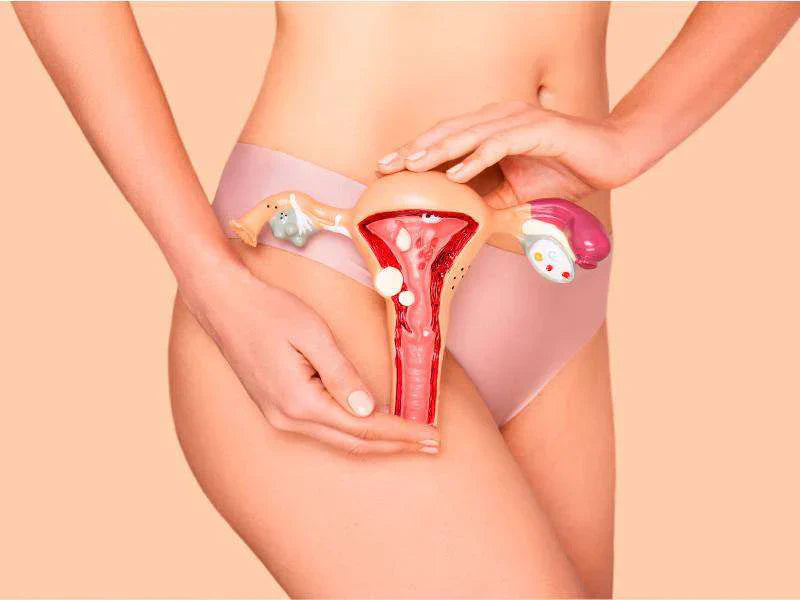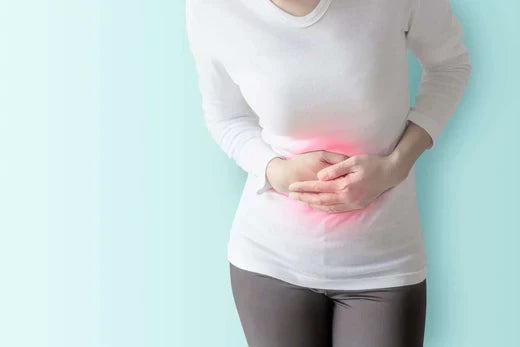Uterine curettage is a fairly common gynecological procedure that you should not be afraid or embarrassed about. Finding out what will happen can help you to be prepared and participate in the decision-making together with your medical team. Therefore, please read this article to find out how it is done and the aftercare.
What is uterine curettage?

Basically, this is a procedure performed by a specialist doctor. The cervix is opened, and a thin instrument is inserted into the uterus to remove tissue from inside the uterus; i.e the endometrium. This can be performed in an outpatient clinic, a health center, or a hospital (1).
How is curettage performed?
This procedure is done with one of these types of anesthesia (2):
-
General anesthesia: the medicine is administered directly into the vein. The advantage of this is that you will be asleep during the procedure.
-
Spinal anesthesia or block: medicine is injected into the spine, and you can remain awake during the procedure without feeling pain.
-
Local anesthesia: this is injected directly into the cervix, and you may feel a pinch when the anesthesia is inserted. Also, you may experience uterine cramps while the cleanse is being done. The advantage of this is that it can be done in a doctor's office.
After anesthesia is applied, you will be asked to lie down on a table similar to the one used for a Pap smear. Later, during the curettage, your doctor (2):
-
Will place a device called a speculum (the same one used in a Pap smear) to be able to see the cervix.
-
The neck of the cervix will dilate (that is, it will open little by little), as this normally stays closed all the time except in the case of menstruation and during ovulation.
-
He or she will insert a device called a curette. It is similar to a spoon with a long handle, and it will slide all the way into the cavity of the uterus.
-
He or she will use a suction device if the curette does not remove all of the lining of the uterus (endometrium).
-
All instruments will be removed from your body once the tissue is removed.
-
The removed tissue will be sent to the laboratory for analysis and a biopsy (a specialized test to determine the presence of cancer cells).
When is curettage indicated?
There are several situations in which a uterine curettage is needed. Sometimes it is for the removal of tissue for a biopsy; on other occasions, it is to provide definitive treatment. The main reasons are (2,3):
-
Bleeding after menopause.
-
Polycystic ovary syndrome.
-
Cervical and uterine polyps.
-
After an incomplete or retained miscarriage.
-
Postpartum when there are placenta remains or membranes (from the sack containing the baby in pregnancy).
-
To remove a molar pregnancy.
-
To remove non-cancerous growths or fibroids.
-
Also, to perform a biopsy when there is suspected cancer.
-
To remove infected tissue, often caused by a complication (pelvic inflammatory disease) of some sexually transmitted diseases.
Why is uterine curettage indicated for bleeding after menopause?
Menopause is determined by the cessation of menstruation. When vaginal bleeding appears after menopause, it is not considered normal and should be assessed by your doctor. The indentation can be caused by (4):
-
Cancer of the uterus and cervix.
-
Uterine tumors.
-
Infection of the lining of the uterus (endometritis).
-
Injury in the pelvic area.
-
Bleeding from the urinary tract or from the rectum.
-
Excessive growth of the endometrium.
In some of these cases, uterine curettage is indicated as part of studies to diagnose the cause of the bleeding.
Possible complications of the procedure
The main complications that can appear are (1,5):
-
Allergic reaction or side effect from anesthesia.
-
Infection of the uterus that can be accompanied by fever, abdominal pain, and foul-smelling bleeding.
-
Hemorrhage or heavy bleeding.
-
Perforation of the uterine wall during the procedure.
-
Asherman's Syndrome. This occurs when scars form inside the uterus. Here, the walls stick together, which can cause irregular periods. It is also a cause of infertility on many occasions.
Recommendations for care after a uterine curettage
In general, you can follow these recommendations (2,3):
-
Use the pain relief indicated by your doctor.
-
Get out of bed and walk around when your doctor tells you to. This will keep your muscles strong and prevent clots (called thrombi) from forming in your blood vessels.
-
Keep resting as indicated.
-
Keep an eye on the bleeding. This will gradually fade and darken over the course of about a week.
-
Use pads instead of tampons. These will protect you from infections.
-
Resume sexual intercourse once the bleeding has stopped.
-
Bathe normally the next day.
-
See your doctor if you experience pelvic pain, foul-smelling discharge, fever, prolonged or heavy bleeding.
-
Show up for your follow-up appointment.
There are definitely many reasons why you might be given a curettage. For this reason, the most important thing is to be prepared and be accompanied by professionals trained in this procedure. Also, remember to consult your doctor about your doubts beforehand and do not hesitate in seeing them immediately if you think you are experiencing a complication.
Bibliographic references
-
IVF London. Dilation And Curettage (D&C) [Internet]. 2022 [cited 2022 Nov 2]. Available from: https://ivflondon.co.uk/treatments/dilation-and-curettage/
-
Stang D. D and C (Dilation and Curettage) Procedure [Internet]. Healthline; 2020 [cited 2022 Nov 2]. Available from: https://www.healthline.com/health/d-and-c#uses
-
Northern Devon Healthcare NHS Trust. Hysteroscopy – Dilation and Curettage (D&C) under local anaesthetic [Internet]. 2018 May [cited 2022 Nov 2]. Available from: https://www.northdevonhealth.nhs.uk/wp-content/uploads/2016/02/hysteroscopy_d_and_c_local_anaesthetic.pdf
-
Laughlin-Tommaso SK. Bleeding after menopause: Is it normal? [Internet]. Mayo Clinic; 2020 Sept 16 [cited 2022 Nov 2]. Available from: https://www.mayoclinic.org/diseases-conditions/menopause/expert-answers/bleeding-after-menopause/faq-20058396
-
Cleveland Clinic. Dilation and Curettage (D & C) [Internet]. 2021 Mar 15 [cited 2022 Nov 2]. Available from: https://my.clevelandclinic.org/health/treatments/4110-dilation-and-curettage-d--c
You May Also Like

JOIN US AND GET 10% OFF
Sign up to our newsletter to access free resources, advice and support.















